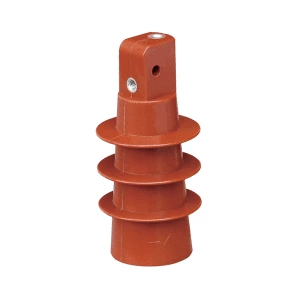Epoxy Resin Insulator Product Features
high voltage epoxy Product features:
(1) High strength and light weight. epoxy resin insulator has a high strength-to-weight ratio, that is, high specific strength. Its high mechanical strength comes from the excellent mechanical properties of the FRP core rod. The tensile strength of the FRP pull-out rod, which is currently widely used, can reach more than 1000MPa, while the core rod density is only about 2g/cm3. Therefore, its specific strength is very high, about 5 to 10 times that of high-quality carbon steel. At the same voltage level, the weight of high voltage epoxy resin is only 1/7 to 1/10 of that of porcelain insulators.
(2) High wet flashover and pollution flashover voltage. The hydrophobicity of the low-energy surface of organic composite materials is the main reason for the excellent wet pollution resistance of high voltage standoff. Under severe meteorological conditions such as heavy fog, light rain, dew, melting snow, and melting ice, separate water droplets are formed on the surface of the composite insulator instead of a continuous water film. The conductivity of the pollution layer is very low, so the leakage current is also very small, and it is not easy to have a strong local arc, and it is difficult for the local arc to further develop and cause external insulation flashover. After a period of operation, the surface of the composite insulator is polluted, and the hydrophobicity can migrate to the surface of the pollution layer. This is a unique property of silicone rubber materials. Under the same pollution degree, its pollution flashover voltage can reach more than twice that of the insulator with the same leakage distance.
The equivalent diameter of ordinary rod-shaped suspension composite insulators is much smaller than that of ordinary suspension porcelain insulators and post insulators, which is also an important reason for its excellent pollution resistance. Under adverse conditions, hydrophobicity may decrease or be lost due to the influence of electrical and environmental stresses, but its equivalent diameter will not become thicker, so the pollution flashover voltage will remain at a high level.
(3) Convenient operation and maintenance. The excellent pollution resistance of organic external insulation improves the reliability of power system operation. In polluted areas, there is no need for regular cleaning like porcelain and glass insulators, and there is no problem of zero value detection of ordinary suspension porcelain insulators, which greatly reduces the operation and maintenance costs of insulators in polluted areas.
(4) Not easy to break, preventing accidents. Composite insulators have strong impact resistance, which greatly reduces accidental damage caused during installation and transportation, and can effectively prevent damage caused by human factors such as gunshots.
Technical standards:
GB/T 19519-2004 "Composite insulators for AC overhead lines with nominal voltage higher than 1000V - Definition, test methods and acceptance criteria"
JB/T 5892-1991 "Technical conditions for organic composite insulators for high-voltage lines"
JB/T 8460-1996 "Dimensions and characteristics of rod-shaped suspension composite insulators for high-voltage lines"
Model description:
FXB - rod-shaped suspension composite insulator for high-voltage lines;
W - large and small umbrellas (equal diameter umbrellas are not indicated);
1, 2, 3, 4 - design serial number (serial number 1, 2 refers to the creepage distance of 20mm/kV, serial number 3, 4 refers to the creepage distance of 25mm/kV);
The number after "—" indicates the rated voltage value, kV;
The number after "/" indicates the rated mechanical tensile load value, kN;
The last letter indicates the connection structure type (ball and socket connection is not indicated).

